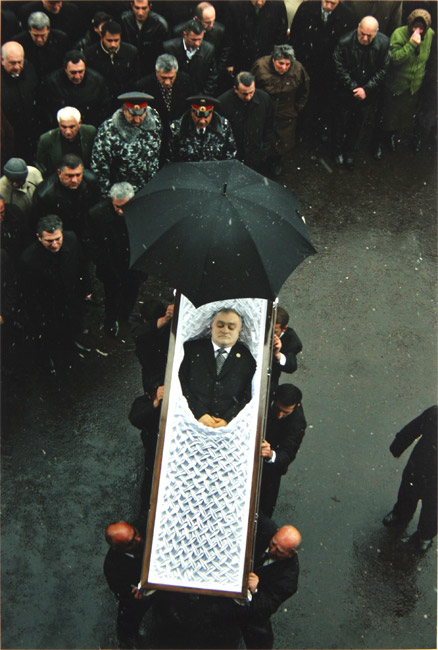While some of the most remarkable work done in the photographic medium is without a doubt by press photographers (from Robert Capa to Sebastian Salgado and Annie Leibovitz), their place amidst museum collections is not necessarily guaranteed. The primary issue lies in the simple fact that the agenda of the press photographer is documentation and reportage. Few photographers working in the field have the time or the means to articulate more complex ideas that engage with theoretical or formal frameworks, which has increasingly become a pre-requisite for gallery representation. Yet, the documentary photographer is in a way the supreme professional, liable to make choices and decisions on a spot. Their responsibilities – both ethical and moral – are often greater and graver. In the face of much post-modern or post-structural criticism and theory in regards to the photographic image, the documentarian has to preserve a belief in the idea that their work purports to represent some sense of truth. This is a conundrum which can only be resolved with a profound understanding of craft, a clearly articulated individual approach and an awareness of wider discourses surrounding photography.
Recently Lusadaran’s collections were enriched by two type C photographs by one of the most prominent documentary photographers working in Armenia, Anahit Hayrapetyan. Born in 1981 in Artsakh (Nagorno Karabakh), Hayrapetyan came to photography after deciding to abandon a career in IT. She was a student of noted photojournalist Ruben Mangasaryan, whose workshops between 2005 and 2008 were an important milestone in the history of the medium in this country, engendering an entire generation of talented practitioners. Hayrapetyan has since gone on to work for www.eurasianet.org, is a participant of numerous international exhibitions and a winner of a number of prestigious awards. Most recently, she was awarded Lusadaran’s first prize for photography for her 2011 image ‘Corridor. Metsamor nuclear station’, which was included in the exhibition ‘Industrial Symphony: photography and the post-industrial age’.
The initial influence of Mangasaryan’s painterly vision was apparent in Hayrapetyan’s early portfolios. Her works made between 2006 and 2009 straddled an edge between documentation and almost expressionist experimentation with the image. The two photographs donated by Hayrapetyan to Lusadaran represent the height of this experimental phase in her career, before she turned to a more detached mode of objective photography. While newer works like ‘Corridor…’ (also in Lusadaran’s collection) focus on context and absence, the subject is very much front and centre in photographs such as ‘Funeral of Andranik Margaryan’ 2007 and ‘Chrism blessing’ 2006-08.
In both images the photographer relates the experience and significance of the depicted events by capturing the atmosphere and the mood – a hallmark of her work in general. Hayrapetian displays a mastery of compositional devices which are used adroitly for visual punctuation and as a form textual shorthand. The high angles flatten the space and create tense spatial relationships between the various pictorial elements. A sense of ambiguity and mystery permeates these scenes of religious mysticism and death. Despite their extraordinary expressive power, the photographs remain ambiguous and open-ended. The viewer is compelled to meditate and make their own deductions regarding the intricate network of emotions and ideas which are evoked but never enforced in Hayrapetyan’s photographs (especially in the absence of captions).
This gift will significantly expand our burgeoning collection of contemporary Armenian photography, which remains in part, strongly committed to the best traditions of objective documentation and social relevance.






